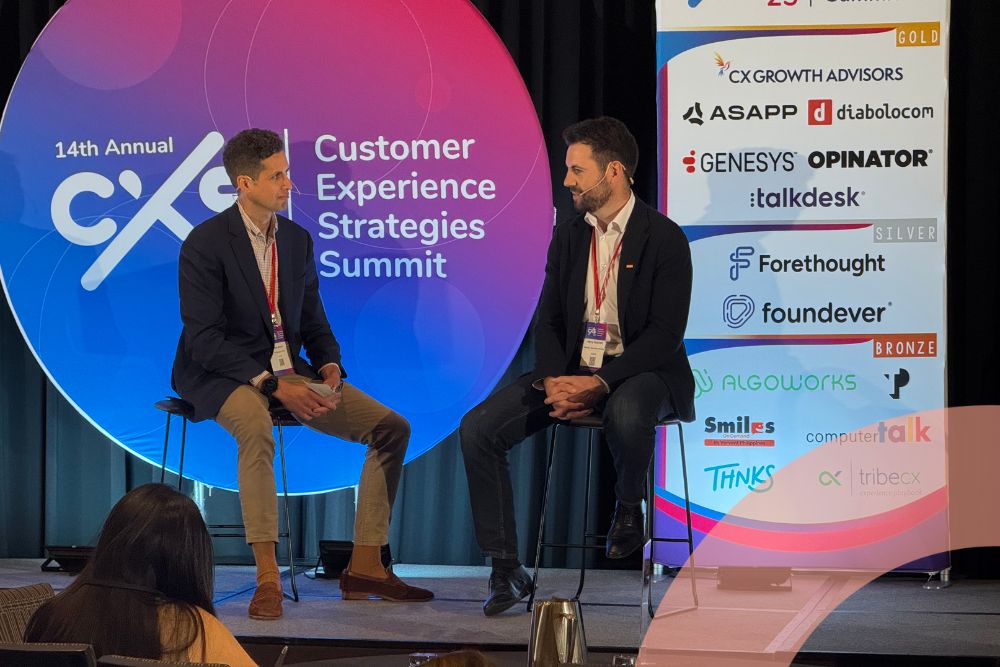Chatbots got a bad name because they’ve been overused. The tech isn’t appropriate for complex issues.
Contact centers are under tremendous pressure: they need to solve a growing array of increasingly complex customer problems while under mounting pressure to reduce costs.
Companies have adopted technologies—like chatbots and IVRs—that “deflect” customers from agents. This helps to address volume and cost challenges; it does not help with increasing complexity, nor with the growing number of problems customers need help with. Companies that implement chatbots or IVRs may focus on “deflection” or containment as a measure of success; this is a flawed strategy that distracts from overarching customer service goals.
The ability of chatbots and IVRs to solve customer problems has been oversold in the last decade. Even the highest performing systems are designed around inflexible rule-based models. These technologies are not new. An industry standard for chatbots was finalized in 2001, and the industry standard for IVRs was finalized a year earlier; indeed, the underlying technology is very similar. The advent of neural natural-language-processing (NLP) models in the early 2010s led to a resurgence in chatbot interest. While performance has improved (for example, you can classify a customer problem in one step, instead of forcing a customer to navigate a menu), the systems remain rule-based and worse, fragile.
The fragility of chatbots means constant tuning and re-working of the rules. It’s simply a budget shift from agents to IT departments or external consultants.
The fundamental limitation of chatbots
Chatbots and IVRs are extremely useful technologies when used appropriately. However, they are not a panacea—and attempting to use these technologies for all customer problems gives them a bad name. They’ve been sent in to do the wrong job—of course they are going to fail to impress.
Rule-based systems (like chatbots and IVRs) can handle simple problems, and improve discoverability of self-service options. This is a good thing. Customers can rely upon a single entry point for support, and be gently routed to the best way to solve their problem. In many cases, that can be showing the customer how to get what they need from digital self-service; in others, the customers’ problems can be addressed with automated responses within the chat interface. Customers are happy because their problems are solved faster (and with no hold time!); and companies are happy because it reduces total cost of service.

Chatbots don’t serve companies well as a siloed tool focused purely on deflection. But, this type of automation can help customers find self-serve answers to simpler needs. Plus, it can help the agent—attempting first troubleshooting steps before escalating to the agent with full context, for example.
Michael Griffiths
The idea is to streamline the customers’ path to resolution—without deflecting customers who will be best served by an agent. Siloed support channels and a focus purely on deflection can result in both a fragmented customer experience and duplication of effort and investment by the company (for example: creating help content in web self-service applications as well as programming it into a chatbot, for example.) Educating customers to use existing self-service tools, where appropriate, can minimize that duplication—as well as streamline and improve the customer experience. Likewise, it’s important to provide a easy path from bot to live-agent interaction when a customer need can’t be addressed by the bot—to avoid making customers hop from channel to channel, starting their journey over with each one.
Chatbots are an excellent way to help shift incoming customer contacts from messaging, voice, or the web into digital self-service when appropriate. But, they cannot serve as the end goal—and using chatbots won’t close down your contact center. The scope of the problems that chatbots can handle is limited. It is perfectly reasonable for these systems to address upwards of 30% of customer issues, though they are often the easy issues and so the reduction on total agent time spent is less than that. To transform customer experience, companies must also look for meaningful ways to help those agents.
Resolving the increasing pressure on agents
As self-service and automation through IVRs and chatbots address more and more simple customer needs, the conversations that do get to agents are increasingly difficult. The result: Agents are handling more complex problems, handle times are longer, and cost savings never materialize.
What does it take to realize those promised cost savings? Our approach is to bring artificial intelligence right to the agent. We realized that the more you invest in customer self-service and engage chatbots for the simpler interactions, the more you need to help your agents handle parts of the job inside the conversation.
The benefits of pairing humans with AI are dramatic. We unite the best of human agents with the best of machine intelligence: more than that, we solve the problem of chatbot management.
Agents use artificial intelligence to make their job easier,It automates portions of their workflow. The AI monitors what agents use, what the outcome is, and what is truly effective for improving the customer experience—and improves itself over time. This feedback cycle means that as the system learns, agents use it more (e.g. from 15% of the time to 60% of the time a year later); and it means that the system learns from your best agents to help move every interaction in the right direction.
The best part of this approach is that we keep the benefits of chatbots. AI-driven automation trained by your agents can replace rule-based chatbots—and be used throughout the conversation, including before the customer is connected to the agent.
The Future of Work
Enterprises would be well served to determine how to eliminate significant minutes of work. By bringing AI to the agent—where upwards of 80% of CX budgets are spent today—provides a dramatic increase in value. Our systems learns how best to help those agents. It is the union of human and AI, and the development of a more robust system, that will transform the contact center.



